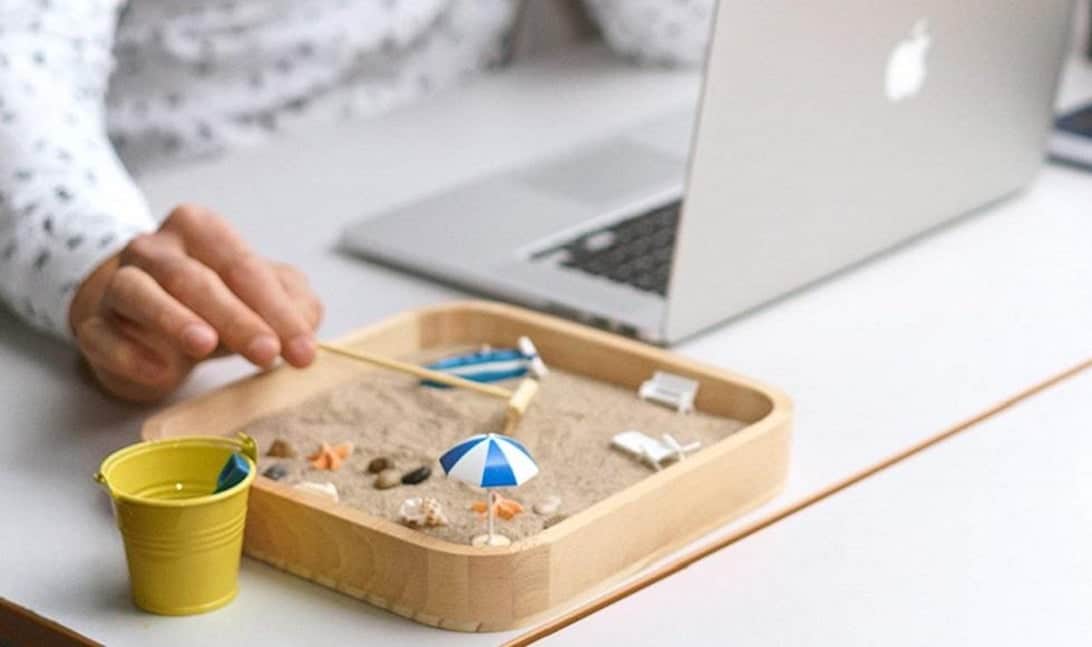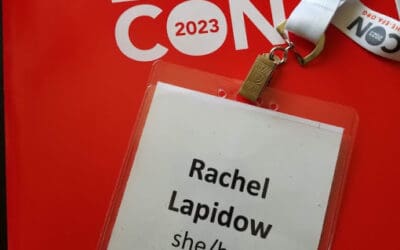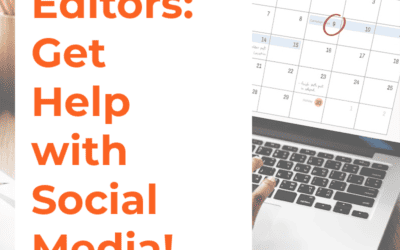Editor’s note: This is a guest post by editorial professional Caitlin O’Brien.
No matter how much you love freelance book editing, or any kind of editing, or how selectively you cultivate your client list, sooner or later you end up with a joyless slog: a task so boring and unappealing that every minute feels like agony. Maybe it’s a fifty-page bibliography, a dense treatise on the mating habits of paperclips, or just some long-overdue bookkeeping at tax time. The timer ticks down, your deadline looms. How do you make it to the finish line?

For me, the key to getting through a joyless slog is knowing that my bored brain will beg for dopamine (a feel-good neurochemical that supports effort, attention, and goal completion), because it won’t get any from the work. If it goes too long without, it’ll wander off to find its own supply—pleasure reading, boredom snacking, doom-scrolling—and that way lies derailment and despair.
My solution? Dopamine “treats”—things I know can healthily and sustainably give me a quick hit of happy chemicals—rationed at regular intervals throughout the work period.

Which ones should you choose? Let’s do a rundown of what I call the Fab Four and how each one can benefit book editors.
First, a Word of Caution
I have plenty of treat ideas to share, but first, I find this strategy is most effective if we lay the following groundwork:
- Know yourself. I’m not a therapist, a scientist, or a medical professional. What helps me might hurt you. For example, if you deal with eating disorders, addiction, or impulse control, some ideas here (like mindful food rewards or video game breaks) might be completely off the table. If you know some of these might mess up your work, send you into a toxic spiral, or otherwise lead to a bad or harmful experience, don’t use them! In fact, for some people, the whole strategy of “dopamine treats” might be completely inadvisable, full stop. Please reflect carefully or even consider consulting with a therapist or loved one before trying this if you think there’s any chance it could cause you harm.
- Automate and externalize as much as you can. Conscious effort and thought can contribute to decision fatigue and willpower fatigue, which in turn can deplete our happy chemicals, and we’re already trying to manage those carefully to get through the slog. I find dopamine rationing less effective if I’m needlessly burning my supply on stuff I could outsource to a bot. Here are some tools I find most useful:
- Pomodoro timers to manage work time vs. break time (I use Marinara for Chrome)
- Physical or digital to-do lists, calendars, and reminders (I use a mix of Todoist, Google Calendar, and Cozi)
- Digital assistants like Siri, Alexa, Bixby, etc.
- An email manager that can schedule and return emails, deliver auto-replies, or pause your inbox when needed (many email clients offer most of these functions, but as a Gmail user, I love Boomerang for this)
- Browser controls (like Leechblock) to keep you from your time-suck websites (Facebook, Reddit, Wikipedia rabbit holes) during work periods so that (if you like) you can ration them out on breaks
Most of the digital methods suggested here have integrations (either natively or through Zapier) that help them share info with each other.
- Organize and segment your tasks. Whether it’s by number of pages, minutes, chapters, etc., set milestones where you’ll enforce breaks and celebrate your progress. If you’re a visual person, making a visual representation of your progress (as I’ll get into a little later) can be especially motivating.
- Practice “priming”: Rituals that mark the start and end of work each day can “prime” your brain to slip more easily in and out of productivity mode. For example, when I start work, I light a few lamps I keep around my desk, and sometimes even a candle or two. I start my Pomodoro plugin, which plays a sound I find mentally engaging (a ticking clock). Lights + ticking = work brain activated. Lights off + ticking off = work brain disengaged, leisure time begins. Easy disengagement at the end of the work period is just as critical to your success as quick engagement at the beginning.
Now that all that’s out of the way . . .
My Favorite Dopamine Treats for Editing
Here are some ideas for dopamine treats to help refresh, reset, and reengage for work. These are what work best for me; take what you like, leave what you don’t, and use them to inspire your own list!
1. Joyful Movement
This could be a short energizing yoga routine, a dance break, or a quick walk around the block—whatever makes you happy! If you need inspiration, I love Adriene Mishler’s “Under 10 Minutes” playlist, Caroline Girvan’s five-minute full body warmup, and dancing along with Chilli to “Captions.”
2. Sunlight and Fresh Air
Tap into the power of the outdoors, either while working (if you can work outside), or on breaks.
3. A Tasty and Mindfully Enjoyed Beverage or Snack
Find something that feels more “special” than your usual fare, like a fancy little cupcake or your favorite bubble tea. (Again, if food rewards are a pitfall for you, avoid this.)
4. An Energizing or Cheerful Playlist
Play a list that is filled with the type of songs that banish a bad mood or blow out the mental cobwebs. Feel free to try out my own personal “ENERGY” playlist (note: contains some songs with explicit lyrics). Or, if you’re in more of an early ‘90s mood, consider this re-creation of my third-grade PE teacher’s class mixtape, ca. 1991. If those don’t do it for you, you might find that browsing or building your own playlists can be another fun break activity. (Why do you think I have so many?)
5. An Easily Completed Nonwork Task
Sometimes I bust out one of these on a break when I’m far from the finish line. I know it may be hours or days before I’ll get that “mission accomplished” feeling from work, but I might be able to get that same buzz quickly on a break by folding and putting away a few towels or quickly storing or tossing some stray papers on my desk. (I’m talking about short tasks here; if you know this will lead you down the garden path of procrasti-cleaning, please skip.)
6. A Written Checklist, “Done List,” or Visual Progress Meter
The physical feedback of pen on paper feels more satisfying to me than digitally checking off an item from a list, as does the visual feedback of seeing all the items I’ve crossed out, or squares I’ve colored in, or flowers I’ve drawn, etc. “Flowers, you say?” Yes! You can get creative with this. For example, every time you finish a task segment, you could draw and color in a flower. At the end you have a beautiful garden representing all your hard work. Or, buy stickers you like and stick ’em all over your completed list, calendar, or tracker. It felt good when you were a kid in school, and guess what? Still does.
7. Game Breaks
If you’re into games, rather than restricting them solely to the end of the work day, try enjoying a bite-sized piece on your break: a few Candy Crush levels, a round of Spider Solitaire, a side gig in Cyberpunk—whatever gives you that instant feeling of rush and reward. (Again, only do this if you’re certain you can stop yourself when it’s time to go back to work.)
8. Tactile Stimulation
While working, if I stop to think about something (or have to sit on a call), I keep various items on my desk that are pleasant to fidget with, touch, or hold, like nice rocks, seashells, and several ridiculous desk toys. On breaks, physical contact with a friend or loved one can be incredibly restorative, whether it’s a hug, a quick shoulder-squeeze, or (for those of us who work at home with pets) some scritches or tummy rubs for your furry editorial assistant.
9. Laughter!
Watch or read something short that’s guaranteed to make you laugh hard. (Preferably do this while standing up or looking at a different screen so you’re sufficiently decontextualizing from work.) I love Vine compilations (not all are SFW, aka Safe for Work; proceed accordingly) and news bloopers for this.

None of these dopamine hacks will magically make joyless editing easy or fun, but in the short term they can make it a little more bearable. More importantly, a regular drip of happy brain chemicals can help prevent total burnout on your freelance editing career.
I hope some of these prove useful in your next slog!
 Though she grew up in Washington and Alaska, Caitlin O’Brien ended up earning her B.A. in Melbourne, Australia, where she started her publishing career as a Copyright and Pictures Editor for Pearson Australia’s Schools division in 2008. After returning to the US, she managed permissions departments for Pearson and Vista Higher Learning before transitioning to full-time freelance work in 2016. She currently provides permissions editing, copy editing, proofreading, and fact-checking services to publishers and indie authors alike, as well as permissions consulting and training for her editorial colleagues. You can find her online at www.caitlinobrien.com.
Though she grew up in Washington and Alaska, Caitlin O’Brien ended up earning her B.A. in Melbourne, Australia, where she started her publishing career as a Copyright and Pictures Editor for Pearson Australia’s Schools division in 2008. After returning to the US, she managed permissions departments for Pearson and Vista Higher Learning before transitioning to full-time freelance work in 2016. She currently provides permissions editing, copy editing, proofreading, and fact-checking services to publishers and indie authors alike, as well as permissions consulting and training for her editorial colleagues. You can find her online at www.caitlinobrien.com.



